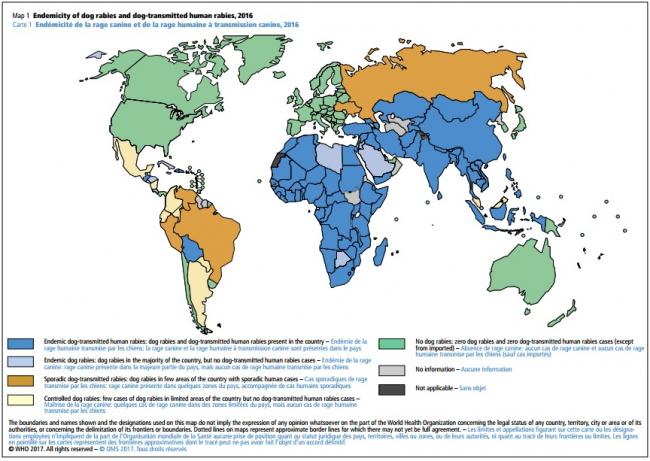The last mile for rabies elimination in Latin America
- Community News
There is no doubt that the regional program for rabies elimination across Latin America has been a success. Since the vision of an end to human deaths from rabies across the region was first conceived in 1983, human rabies case numbers have been falling dramatically, at more or less the same rate ever since. Yet the last mile is always the hardest. No less than four different dates for the elimination of rabies have been set and each one missed. Why is this?
A recent perspectives piece written by the Pan American Health Organization provides valuable insights. Offered as lessons learned to benefit other regions starting on this journey, the authors candidly discuss what could have been done better.
One critical observation is that goals were set without a full appreciation of the vastly different capacities of countries to be able to deliver rabies control activities. Additional technical and financial support supplied to the trailing countries in recent years, particularly in Haiti, Guatemala and Bolivia are improving the regional situation dramatically.

Unless consistent and sufficient canine vaccination scale efforts can be maintained and good programme monitoring and surveillance can provide the data to demonstrate the impact, rabies freedom will not be achieved. Many Latin American countries have long benefitted from dedicated rabies vaccine budgets and cost-saving vaccine procurement mechanisms, but others have struggled and access to vaccine for these countries needs to be formalised to benefit the whole region. High expenditure on human PEP is observed and should be expected even many years after the human cases have fallen to zero.
SIRVERA, the surveillance database established by PAHO for the regional program has been an enduring symbol of collaborative efforts, but large data gaps in it persist. Collection and analysis of the data required to ensure that elimination of human cases can be documented requires additional effort and funding.
To some degree the rabies program has become a victim of its success. As cases have fallen, so too has awareness of the disease, which threatens the success achieved so far. In the last mile of elimination attempts there is no room for inefficiencies and the authors point to several ways that limited resources could be spread further by examining the cost effectiveness of each segment of a program to make sure all are optimal. There are lessons learned from outside the region, such as the use of cost saving intradermal regimen for PEP and surveillance techniques that could be valuable.
Rabies currently remains in the top three zoonotic diseases prioritises by both Ministries of Health and Ministries of Agriculture across Latin America, and ways to integrate its control into that of other diseases to ensure sustainability are being explored.
The threat of emerging diseases is managed is quite different from endemic diseases, and in Latin America now (as in Europe and North America before) we are seeing the evidence that canine rabies has transitioned from endemicity to a re-emergence threat. Areas in Argentina, Brazil, Peru and Nicaragua withoutcanine rabies for years have seen a few new cases in dogs in recent years. Canine rabies is now a re-emerging threat in some areas, particularly those bordering those few areas where endemic transmission persists. Reintroduction events necessitate rapid, emergency measures to ensure that re-establishment does not occur, but the main focus should remain on eliminating those last foci of endemic transmission to protect the whole region..
Capacity building, particularly in surveillance and rapid response, can clearly benefit the control of a large number of diseases. Together with a detailed understanding of the capacity strengthening priorities, the integration of canine rabies control into the “Plan of Action for the elimination of neglected infectious diseases and post-elimination actions 2016– 2022” should deliver the new impetus, and the resources, to reach rabies elimination across the whole region by 2022.
Contributed by Louise Taylor (GARC), Marco Vigilato (PAHO) and Victor del Rio Vilas (PAHO, and now University of Surrey, UK) based on PAHO data and the recent publications: “Tribulations of the Last Mile: Sides from a Regional Program” by Del Rio Vilas et al. Front. Vet. Sci. (2017) 4:4. and “Building the road to a regional zoonoses strategy: A survey of zoonoses programmes in the Americas” by Maxwell et al. PLoS ONE (2017) 2: 3: e0174175.
